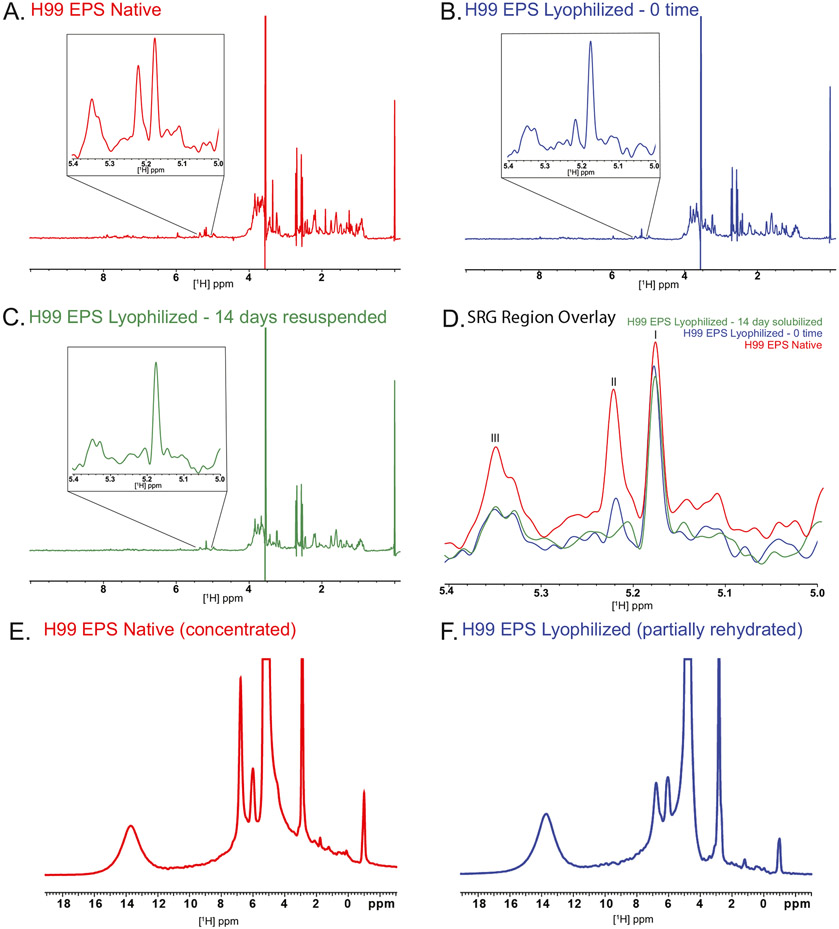Fig. 1.
Effects of lyophilization on NMR signals of C. neoformans EPS. One-dimensional 1H solution NMR spectra and insets expanded vertically by factors of 10 at 60 °C for a native (A) preparation compared with preparations which were lyophilized and solvated with water at time 0 (B) and after 14 days (C); the three spectra are overlayed in (D). SRG region peaks which were integrated indicated as I, II, and III as the motif they belong to is unknown. Peak integrals for the SRG region of the solution-state spectra were compared by setting the respective DSS signals to 1.0. One-dimensional 1H solid-state NMR (ssNMR) spectra obtained at room temperature with 15-kHz magic-angle spinning are shown for native (E: concentrated, partially dehydrated) and lyophilized (F: partially rehydrated) samples, normalized according to sample mass. The chemical shifts of the solution- and solid-state spectra were referenced to DSS at 0.0 ppm and water at 4.8 ppm, respectively. The sharp peaks in the ssNMR at 2.9 and 4.8 ppm are attributed to glycine and water, respectively.

